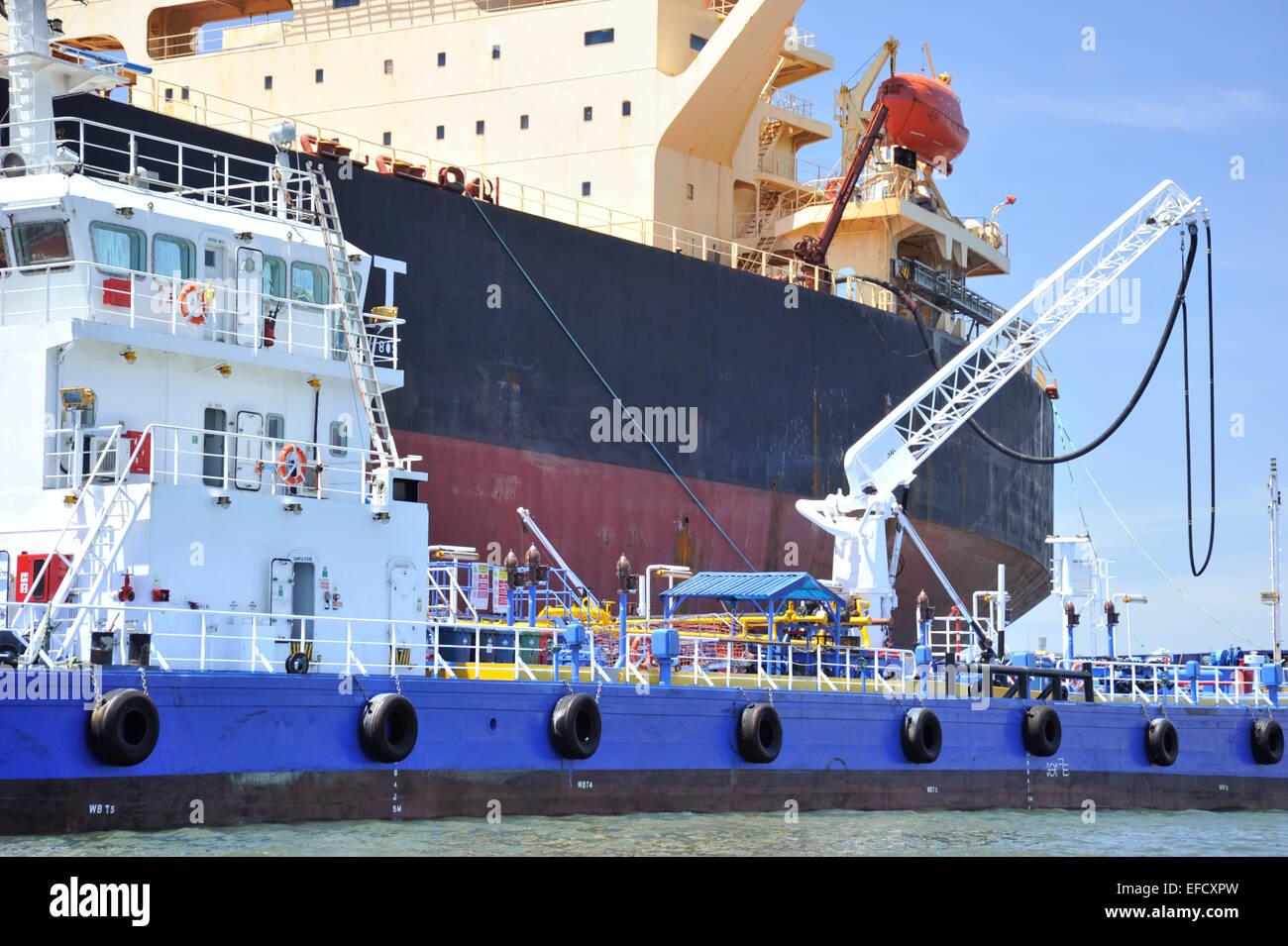Africa-Press – Eswatini. Lakes where most fish are male; drinking water that causes people to lose skin and feel as if their mouths are burning when they brush their teeth — these are just some of the effects of contaminated water in sub-Saharan Africa.
Yet across the continent, weak government oversight and economic dependence means polluters have yet to be held to account. Drug companies, garment makers, oil producers and coal miners have so far dodged the bullet. This breaks a cardinal rule of environmental law — the principle that the polluter pays.
In East Africa, Lake Victoria, the second largest freshwater lake in the world, is producing about 120 000 metric tonnes of fish annually compared with the 180 000 produced in 2010, according to statistics from Kenya Marine and Fisheries Institute.
Scientists are linking the dwindling fish population in the lake to pharmaceutical waste. The pharmaceutically active compounds, also known as endocrine disrupting hormones, interfere with the physiological frameworks of aquatic organisms, with fish species more profoundly affected.
Eric Ogello, fisheries and aquaculture specialist at Kenya’s Maseno University, says: “Our research and data show that these chemicals may be responsible for the dwindling fish population in the lake by interfering with the hormonal balance in fish and thereby negatively affecting their breeding.”
The compounds find their way into the lake either through insufficiently treated effluent, surface runoffs or direct dumping, according to the scientists.
The city of Kisumu, on the shores of Lake Victoria, churns out 385 tonnes of waste a day, according to the Kisumu integrated waste management plan, of which 12.5 tonnes is medical waste, either in liquid or solid form.
The liquid medical waste is channelled into the county liquid waste system, while the solid waste goes into the dumpsites, according to Godfrey Ogonda, the deputy director at a local NGO, Osienala, also known as Friends of Lake Victoria.
He adds that there are problems with hospital waste management, especially waste segregation. “There are certain types of waste that should never find their way into the county waste system because they cannot handle such waste due to their capacity.”
Every hospital, he says, should have an incinerator or have special arrangements to handle such waste. In 2018, a study published in the scientific journal Science of the Total Environment, found traces of the compounds in waste treatment ponds and surface water in the Nzoia River Basin that drains into Lake Victoria.
Compounds of emerging concern
The study focused on three categories of compounds — known as “compounds of emerging concern” or “emerging micropollutants” — which include pharmaceuticals, personal care products and pesticides, according to Kenneth K’oreje, co-author and an environmentalist and water quality and pollution expert with the Kenya’s Water Resources Authority.
The study examined the compounds’ occurrence in wastewater, rivers and removal during the wastewater treatment process.
“We found that some pharmaceutical compounds are not adequately removed during wastewater treatment and are thus discharged into the environment,” K’oreje says.
“The findings mean that the Lake Victoria ecosystem is exposed to adverse effects of these pollutants, which may interfere with its functionality in terms of ecosystem service provision. For example, antibiotics detected in this study have been shown to lead to bacterial strains that can be difficult to manage with current treatment regime when transferred to humans.
“Additionally, some of the compounds are endocrine disrupting and have been associated with hormonal imbalance in fish,” he adds.
Ogello says the compounds, which include birth control pills, antidepressants and antibiotics, cause hormonal imbalance in fish and can affect fish breeding cycles – or worse, render them barren. When fish are exposed to these compounds and the hormonal imbalance becomes eminent, they either delay their spawning (laying eggs) or they refuse to spawn. Fish sex ratio imbalance is becoming common in the Lake Victoria, with more males than females, especially among the tilapia species.
“For example, remove any six fish randomly from any part of the lake today and only one would be female. The ratio of 5:1 is just too acute and defies the law of natural genetics, which dictates a 50-50 ratio in such species,” says Ogello.
Sex ratio imbalance alone can have devastating effect on fish population in the lake by negatively affecting breeding patterns.
“Due to pollution and environmental degradation in the lake’s ecosystem, we have lost up to half the lake’s depth since 1969 through sedimentation. At this rate we would have no lake to speak about in a few more decades,” Ogello says.
He adds: “From up to 300 different species in the 1960s, we now only have about 20 left.”
Juliette Biao Koudenoukpo, director and regional representative at the United Nations Environment Programme regional office for Africa, says that emerging contaminants of concerns including pharmaceutical products are a big problem where they are monitored.
“In general, lack of monitoring [of] these chemicals, which are often in much lower concentrations and can have more severe impacts, makes assessment of their impact difficult,” she says. “For example, many are bound to sediment rather than dissolved in water, which requires specialised analytical capacity.”
Radioactive pollutants
Lake Victoria’s biodiversity is facing threats from a myriad of sources, including radioactive pollutants from heavy metals dumping by industry and hitherto unknown microplastics.
A recent study published in Scientific Reports identified microplastics in soil as a major conduit for fungal infections in sub-Saharan Africa. The study also found traces of microplastics in surface runoff and in rivers. In Uganda, microplastics are a big challenge in the country’s quest to tame pollution in Lake Victoria.
“The biggest headache is how to effectively enforce existing legislation to stem plastic use and disposal, especially at the community level,” says Samuel Bassa, ecologist and researcher at the National Fisheries Resources Research Institute in Uganda.
“Any damage to the environment is a violation of human rights,” adds Benson Ochieng’, executive director at the Institute for Law and Environmental Governance in Kenya. “It is now a settled principle that the right to life encompasses the environment within which that life is enjoyed. This takes greater significance among poor rural populations who directly depend on environmental goods and services for daily survival. It is particularly important in the case of Lake Victoria, the source of water, food and other essential ecosystem services.”
The polluter pays principle, Ochieng’ says, is now accepted as a cardinal rule for environmental law. “Polluters must pay for the cost of environmental damage caused by their actions. Anyone who suffers that damage is entitled to compensation and or reparations from polluters.”
Two municipalities, a sugar company and a lax environmental management body have been implicated as the worst culprits causing pollution in Lake Victoria. Kisumu county government is responsible for all domestic waste management in Kisumu city, the largest metropolis in the Lake Victoria catchment.
On the other hand, it is the responsibility of the National Environmental Management Authority (NEMA) to ensure that industries adhere to set environmental standards. But, according to Ogonda, the Kisumu Water and Sewerage Company (Kiwasco) has failed to ensure proper waste management in the county, leading to pollution in Lake Victoria.
“It has failed to adhere to certain standards of waste management, which includes that every hospital has a functional incinerator to dispose of non-biodegradable medical waste. Its sewage treatment plant in Kisumu city has no capacity to handle certain medical waste, meaning these [medical waste] find their way into the lake,” Ogonda says.
Throughout this investigation and at the time of publication, SciDev.Net tried to contact Kiwasco management for comments through phone calls and email, without success.
Kibos Sugar company has been shut down twice in a space of two years by the NEMA for dumping raw effluent into Kibos River, which drains into Lake Victoria.
In July 2019, the lands and environmental court, sitting in Kisumu, ordered the company be shut down over environmental pollution, following a successful petition by residents. The company petitioned this decision and it received orders to continue operations. But the NEMA again shut the company down in February 2020 over the same environmental concerns.
At the time of publication, Kibos Sugar was operational but efforts to get comments from the management were fruitless.
Acid mine drainage
South Africa is a water-scarce country, but what it lacks in this resource it makes up for in coal. According to the country’s department of mineral resources and energy, it provides about 6% of global coal exports and relies on coal for more than 90% of its own electricity.
Most coal comes from Mpumalanga. Among the towns there is Carolina, which has experienced a boom in jobs and economic activity as a result of rapidly growing mining activities.
Carolyn Palmer, director of the Institute for Water Research at Rhodes University, who has studied the water crisis in Carolina, says the risks of acid mine drainage reach the whole of the mine access areas but affect vulnerable communities the most.
“These are the lowest paid and most exposed communities. And because of their vulnerability, they are tied into those jobs, those areas, and those risks,” she says.
In January 2012, residents of Carolina reported “funny coloured” water with a sour taste coming from their taps. Reports compiled by nonprofit, groundWork, show that when porridge was prepared with this tap water, it turned blue. Residents said brushing teeth with the water wasn’t possible because “it felt as if your mouth was on fire”.
Fish in the Boesmanspruit River, which provides Carolina’s drinking water, were dying and the water had turned dark green. Residents were warned not to use their taps and emergency measures were put in place for seven months.
Chemical analyses detailed in a South African Journal of Science study show the pH of Carolina’s water at this time was 3.7, indicating how acidic it was. It also had toxic levels of iron, aluminium, manganese and sulphate. Evidence for the contamination pointed to coal mining activity.
“These are the typical hallmarks of acid mine drainage,” the study notes.
The seeping of water from abandoned mine pits, waste dumps, tailings and stockpiles generates acid mine drainage, which is associated with all forms of mining activities, and research shows it is more pronounced with gold and coal mining.
The department of water and environmental affairs said in a statement it would hold the mines implicated in the Carolina crisis responsible, but actions to date have not been taken. Requests sent to the department from SciDev.Net asking for clarity on this were not answered as of the time of going to print.
Inactivity in holding mining companies to account for water violations is not uncommon, according to a report from the Centre for Environmental Rights. “The regulatory system — from issuance of a water use licence to accountability for non-compliance — has effectively disintegrated,” it says, adding that mining companies take advantage of this.
Circular economy
The need to establish and enforce water safety controls is a growing concern on the continent, says Samuel Godfrey, United Nations Children’s Fund adviser for Water, Sanitation and Hygiene for the eastern and southern Africa region.
Although no country in sub-Saharan Africa has an environmental regulatory body as tough as those in high-income countries such as the US in enforcing policies, Godfrey says there is backing for such a move.
“There are a number of countries in sub-Saharan Africa where there is growing support for a body that can help safeguard water and ensure a positive trade-off between development and pollutants generated by industry,” he says.
This movement, however, is being driven by interest and investment from industry rather than government. “The cost of water production is so high that utilities are looking for major solutions,” he says.
Governments and policy-makers need to find solutions.
According to a study by the Gender Growth and Labour Markets in Low Income Countries programme, sub-Saharan Africa is expected to add 1.8 billion people to its population between 2020 and 2100, and will be the only region with a growing working-age population by 2050.
Striking the right balance between jobs and environment may mean looking at water as part of a circular economy, Godfrey says.
“Water is looked at as a product to be consumed, but it’s not. It’s a component within a whole circle that is affected by many ministries, agencies and stakeholders and where the more economic and industrial growth we have the more important it becomes.”
For More News And Analysis About Eswatini Follow Africa-Press







